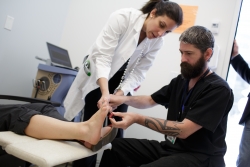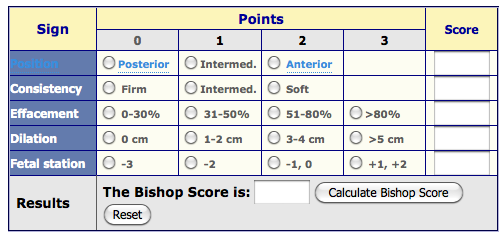
This entry is a part of the wonderful Herbwifery Blog Party!
Summer Skin Care.....
is all about fresh herbs and delicious fun. Since the gardens and fields are full of surprises now, there are endless ways to treat and care for your skin.
I tend to focus on things that don't attract mosquito's and ticks, since I am outside so much. I don't use sweet stuff like Roses and Jasmine until nighttime when I'll be sleeping indoors.
But many flowers are lovely and do not attract hungry critters. Above, is the start of the explosive, magnificent Monarda flower (M. Didyma) which attracts hummingbirds and heals many ailments. For skin care, I like to make an infusion, cool it, and use it for a facial toner. In fact, most of the following plants, I use this way. I like to make a small jar, since every few days I'll return it to the garden before it turns, and make a fresh one.

Beautiful Basil. Fill a jar with Basil and cover with honey to make a potion to eat and smear on your face. Basil is great for oily, problematic skin, perfect for summer skin care. The basil honey takes only a week to steep, strain and add to tea to drink, or to cosmetic clay for a lovely mask.

This beautiful dark green leaf is of course, the famous Comfrey, full of soothing and mending qualities. I've been using it this past week for my daughter's wrist, which she badly sprained playing Goalie. I macerated it with tinctures of Yarrow, Meadowsweet, and St. Johnswort tincture and oil both. We keep the poultice on for as long as comfortable. The swelling and pain are greatly reduced, and the healing is expedited. By chance there is any hairline fracture, the Comfrey will mend this as well - and as a side note, there is no broken skin. Using comfrey on deep cuts can trap bacteria and lead to infection.
On the lighter side, Comfrey leaf is a super-soother. A cooled infusion is amazing on rashes, red itchy skin, dry skin, or baby's heat rash. A comfrey leaf vinegar is fabulous for moisturizing dry hair as well.
For Poison Ivy, make a big pouch of Comfrey leaf, mugwort leaf, and oats, and add to the bath while filling. The soothing and astringent combination will feel great.
To make a gloriously green healing oil, cut several leaves and place into a double boiler. Gently keep at warm for a couple of hours, being sure not to let it get too hot as to burn the oil. Alternate the stove on and off throughout the day. Let steep overnight, off. Strain in the morning. If you feel you have too much moisture, let stand for a day and pour the oil off, leaving the water behind. If you make the oil using a blender you will have more trouble with water content. If you use a crock pot, be sure to monitor the heat more carefully - they get very hot!

This lovely yellow flower will soon be a crunchy, cooling cucumber. Many garden veggies are great for the skin too! Sliced cukes on the eyes are cliche - but effective for reducing swelling or soothing sunburn. Tomato leaves gave a very pretty aroma, and make a nice toner. Infuse the leaves in part water and part vodka, and add any additional plants you like from the garden, such as Marigold petals, lettuce leaves, kale, strawberry leaves, or carrot tops.

Foot Flowers ...... Summer can be a time for troubled feet if you are hiking through hot sun, wet rivers, and itchy grass. My kayak shoes usually end up with poison ivy on them too, sneaking in through the side holes and making very pesky bumps between my toes.
End an adventurous day with an herbal foot soak. First, make a strong tea, steeping about 1/2 an hour, and make at least a quart of it, with fresh Oregano (shown above), Peppermint, Sage, Rosemary, Lavender, and Marigold or Calendula blossoms. Of course you can be creative with what plants you have available ... leaning towards aromatic and antiseptic herbs. Then, if you want it cold, refrigerate it. If you want it warm, go ahead and pour it into a basin and fill the rest with plain water. If you want, you can add witch hazel extract as well. Grab a good book, a cup of tea to drink, and soak away, as long as you like, but usually at least 20 minutes long.
For foot care on the trail, pack a combination of comfrey root powder, baking soda, kaolin clay or arrowroot powder, and essential oils mixed in if you like.
A salve of Sage and Yarrow are fantastic on the piggies too!

Eyes ..... Rose petals are so perfect for curing red hot eyes, whether from swimming, sun, or computer fatigue. An infusion or distillate applied a few times a day with a cotton ball is a real relief. A rose sitz bath is used also for staunching bleeding in postpartum women, so is helpful to constrict overheated varicose veins during the summer. Rose tinctures effective in helping to prevent spring nosebleeds if taken internally.

Every July, on or around my birthday, I honor this plant of gold and harvest her blossoms and buds. I put them all into jars and fill with olive oil. after 6 weeks I have a blood red oil that heals virtually everything. My son, who has sensitive skin, swears by it for every ailment he has, and won't use anything else because he claims it's the only thing that reliably does not sting. For nerve pain, sunburn, chapped skin, sore muscles, and anything else, St. Johnswort oil or salve is a first-grab remedy.
For days in the sun, I make a squeeze bottle with SJW oil and Lavender hydrosol (since the hydrosol won't go bad like water) and a tad of liquid chlorophyll to shake and apply frequently throughout the day. Since it's liquid and not a cream or salve, it won't melt at the beach. This also makes a perfect daily moisturizer. Add a little geranium essential oil for extra bug-repelling action if you will be gardening or hiking.
More lovely herbs that I like to use during the hot months ..........

Lemon Balm ..... Melissa Off.
 Anise Hyssop ..... Agastache Foeniculum
Anise Hyssop ..... Agastache Foeniculum
And a few more Recipes :) ....................
Rose-Rosemary Toner:
1/2 pint each fresh rose petals and fresh rosemary sprigs
Add 1 tablespoon each:
Brandy, Honey, and Apple Cider Vinegar
Fill remainder with water or hydrosol of choice.
Let steep in the sun for one day and one night. strain and refrigerate. Use at night to restore moisture and elasticity to the skin, and just because it feels and smells good!
Poison Ivy spray:
2 oz Yarrow/Mugwort infusion
10 drops peppermint essential oil
5 drops German Chamomile essential oil
Shake and spray as often as needed.
Marigold Mask:
Steep fresh Calendula flowers in good honey for 1 week. Strain, and mix equal parts Calendula honey with Green, pink, or white clay, and apply as a mask for 20 minutes.
Herbs & Honey Liquid Soap Infusion:
Place a pint of fresh herbs into a blender. For example, Lemon balm, Peppermint, Sage, Rosemary, and Verbena.
Cover, barely, with liquid castille soap. Do not pour the whole thing in .... just enough to create a maceration. Turn the blender on low to blend.
Transfer to a wide mouth jar. Fill remainder with liquid castille soap and steep for three days.
Strain, and add about 1/3 cup honey and stir. Pour into a big squeeze bottle and enjoy!
Happy Summer!







 This entry is a part of the wonderful Herbwifery Blog Party!
This entry is a part of the wonderful Herbwifery Blog Party! Beautiful Basil. Fill a jar with Basil and cover with honey to make a potion to eat and smear on your face. Basil is great for oily, problematic skin, perfect for summer skin care. The basil honey takes only a week to steep, strain and add to tea to drink, or to cosmetic clay for a lovely mask.
Beautiful Basil. Fill a jar with Basil and cover with honey to make a potion to eat and smear on your face. Basil is great for oily, problematic skin, perfect for summer skin care. The basil honey takes only a week to steep, strain and add to tea to drink, or to cosmetic clay for a lovely mask. This beautiful dark green leaf is of course, the famous Comfrey, full of soothing and mending qualities. I've been using it this past week for my daughter's wrist, which she badly sprained playing Goalie. I macerated it with tinctures of Yarrow, Meadowsweet, and St. Johnswort tincture and oil both. We keep the poultice on for as long as comfortable. The swelling and pain are greatly reduced, and the healing is expedited. By chance there is any hairline fracture, the Comfrey will mend this as well - and as a side note, there is no broken skin. Using comfrey on deep cuts can trap bacteria and lead to infection.
This beautiful dark green leaf is of course, the famous Comfrey, full of soothing and mending qualities. I've been using it this past week for my daughter's wrist, which she badly sprained playing Goalie. I macerated it with tinctures of Yarrow, Meadowsweet, and St. Johnswort tincture and oil both. We keep the poultice on for as long as comfortable. The swelling and pain are greatly reduced, and the healing is expedited. By chance there is any hairline fracture, the Comfrey will mend this as well - and as a side note, there is no broken skin. Using comfrey on deep cuts can trap bacteria and lead to infection. This lovely yellow flower will soon be a crunchy, cooling cucumber. Many garden veggies are great for the skin too! Sliced cukes on the eyes are cliche - but effective for reducing swelling or soothing sunburn. Tomato leaves gave a very pretty aroma, and make a nice toner. Infuse the leaves in part water and part vodka, and add any additional plants you like from the garden, such as Marigold petals, lettuce leaves, kale, strawberry leaves, or carrot tops.
This lovely yellow flower will soon be a crunchy, cooling cucumber. Many garden veggies are great for the skin too! Sliced cukes on the eyes are cliche - but effective for reducing swelling or soothing sunburn. Tomato leaves gave a very pretty aroma, and make a nice toner. Infuse the leaves in part water and part vodka, and add any additional plants you like from the garden, such as Marigold petals, lettuce leaves, kale, strawberry leaves, or carrot tops. Foot Flowers ...... Summer can be a time for troubled feet if you are hiking through hot sun, wet rivers, and itchy grass. My kayak shoes usually end up with poison ivy on them too, sneaking in through the side holes and making very pesky bumps between my toes.
Foot Flowers ...... Summer can be a time for troubled feet if you are hiking through hot sun, wet rivers, and itchy grass. My kayak shoes usually end up with poison ivy on them too, sneaking in through the side holes and making very pesky bumps between my toes. Eyes ..... Rose petals are so perfect for curing red hot eyes, whether from swimming, sun, or computer fatigue. An infusion or distillate applied a few times a day with a cotton ball is a real relief. A rose sitz bath is used also for staunching bleeding in postpartum women, so is helpful to constrict overheated varicose veins during the summer. Rose tinctures effective in helping to prevent spring nosebleeds if taken internally.
Eyes ..... Rose petals are so perfect for curing red hot eyes, whether from swimming, sun, or computer fatigue. An infusion or distillate applied a few times a day with a cotton ball is a real relief. A rose sitz bath is used also for staunching bleeding in postpartum women, so is helpful to constrict overheated varicose veins during the summer. Rose tinctures effective in helping to prevent spring nosebleeds if taken internally.
 Lemon Balm ..... Melissa Off.
Lemon Balm ..... Melissa Off. Anise Hyssop ..... Agastache Foeniculum
Anise Hyssop ..... Agastache Foeniculum